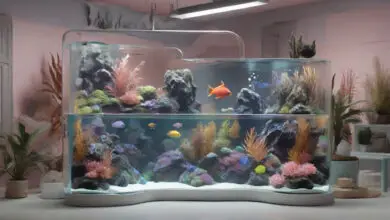Keeping Hospital Tanks Clean and Working Properly

Hospital tanks are important for storing liquids that are used in hospital operations. These tanks need regular maintenance and cleaning to keep working properly. This blog post provides guidance on hospital tank setup, cleaning methods, and maintenance procedures. Following proper techniques will allow hospital staff to ensure tanks remain contamination-free and functioning at full capacity.
Overview of Hospital Tank Systems
Hospitals utilize tanks for holding and dispensing important liquids. Common hospital tanks include:
- Water storage tanks
- Waste water tanks
- Chemical mixing and supply tanks
- Sterilization fluid tanks
- Pharmaceutical tanks
These tank systems provide the liquids needed for various hospital functions. For example, clean water tanks supply water for drinking, cleaning, food preparation, hygiene, and medical procedures. Waste water tanks collect and hold sewage and greywater from hospital sinks and bathrooms before waste removal. Chemical tanks store and mix cleaning solutions, reagents, and disinfectants used to sanitize medical equipment and environments.
Keeping these hospital tank systems properly maintained ensures uncontaminated water supply, effective waste removal, safe chemical handling, and overall hospital functionality.
Initial Tank Setup
When installing new tanks or replacing old tanks, follow proper setup steps:
Select Appropriate Tank
- Choose tank material compatible with intended liquid (stainless steel, polyethylene plastic, fiberglass, etc.)
- Make sure tank size fits available space but still holds sufficient liquid volume
- Pick shape/dimensions allowing pipes and accessories to be installed
Prepare Installation Area
- Clean area thoroughly and remove previous tank if replacing
- Level surface so tank sits evenly without tilt
- Determine needed ventilation, drainage, secondary containment in case of leaks
Add Components to Tank
- Install vents, hatches, pumps compatible with type of liquid and tank environment
- Attach valves, gauges, sensors, controls to regulate liquid flow and monitor tank level
- Set up pipe network leading to and from tank for intake and discharge
Proper tank selection, site preparation, and component installation gives hospital tanks the setup for years of optimized performance.
Cleaning Methods for Hospital Tanks
Hospital tanks with contaminated water or chemicals pose immense health risks. Regular cleaning and sanitization ensures purity of water supplies and solutions. Use these methods to maintain clean hospital tanks:
Manual Scrubbing
- Drain all liquid from tanks before scrubbing interior
- Enter tank or use long handled brushes to scrub all interior tank surfaces
- Remove sediment, biofilm, algae and difficult stains by manual abrasion
- Rinse away all cleaning residue with hot water spray
Chemical Cleaning Solutions
- Select EPA approved detergents or disinfectants for tank type
- Circulate solutions throughout tank system, allowing time to breakdown contamination
- Flush chemical residue until discharge runs clear
Automated Clean-in-Place (CIP)
- CIP systems clean without tank entry using programmable wash cycles
- Spray balls rotate and shoot hot cleaning solutions over all interior surfaces
- Final rinse removes all chemical residue
- Computer controlled, often using fresh water final rinse to conserve water
Following a thorough cleaning, tanks should be disinfected using hospital-grade disinfectant to finalize the sanitization process.
Maintenance Checks and Procedures
Consistent maintenance helps sustain tank cleanliness and operational performance. Follow these key maintenance practices:
<table> <tbody> <tr> <td>Weekly</td> <td>- Check tank water levels </td> </tr> <tr> <td>Monthly </td> <td>- Inspect tanks and pipes for leaks/cracks </td> </tr> <tr> <td>Quarterly</td> <td>- Confirm tank components (valves, pumps, controls) function properly</td> </tr> <tr> <td>Annually </td> <td>- Drain and visually inspect tank interior surfaces for sediment and biofilm; clean if contamination is visible </td> </tr> </tbody> </table>
Additionally:
- Have professional divers periodically inspect exterior of in-ground tanks
- Test retained liquid annually for microbes and replace filters as needed
- Validate cleaning and maintenance logs to meet quality assurance standards
Well maintained tanks should last decades without corrosion, cracks, or failure. Wait for full replacement only when tanks show extreme wear.
Key Takeaways for Hospital Tank Care
Maintaining contamination-free hospital tanks through conscientious installation, cleaning, and maintenance prevents staff and patient exposure to harmful microbes and optimizes hospital operations. Keep this advice in mind:
- Carefully install tanks allowing for needed accessories, ventilation, drainage
- Frequently inspect tanks and clean at first sign of sediment or biofilm
- Follow manual, chemical, or CIP cleaning methods for complete sanitization
- Stick to maintenance schedule for tank components and liquid quality checks
- Replace worn tanks before catastrophic leaks develop
Investing staff time into hospital tank care protects public health in the critical hospital environment. Consistent cleaning paired with repairs or replacements when deterioration becomes visible allows hospital tanks to continue supplying safe water and chemicals for hospital needs.
Special Considerations for Specific Tank Types
While all hospital tanks require careful installation, cleaning and maintenance, some types of tanks have additional considerations:
Water Storage Tanks
- Need extra precautions to prevent microbiological contamination
- Should undergo frequent water testing to check chlorine levels and detect microbes
- Require certified drinking water grade materials and supplies (pipes, seals)
- Critical to have overflows, ladders, and safety railings to allow for physical inspection
Waste Water Tanks
- Necessitate extra protective equipment during cleaning to prevent exposure to hazardous sewage
- Need verifies waste treatment system for safe handling of outgoing effluent
- Possible odor and ventilation issues require vent stacks leading to roof
- Must have functioning high-level alarms to warn before overflows
Chemical Tanks
- Require special compatible component materials able to withstand corrosive solutions
- Necessitate separate containment area surrounding tanks able to hold 110% full volume to contain spills
- Need automated tank gauging for precise chemical volume measurements
- Require clearly labeled pipes with directional flow arrows to prevent accidental cross-contamination
Sterilization Fluid Tanks
- Specialized heat and pressure rated components are imperative
- Routine testing ensures chemical sterilants maintain effective antimicrobial activity
- Tight lids and positive pressure help prevent vapor loss and airborne accidents
Expanding Tank Capacity for Future Growth
As hospitals expand services and patient volumes increase, extra tank capacity helps meet rising liquid demands. Consider these tips when planning additional storage volume:
- Survey current and projected hospital liquid usage rates
- Model increased needs using 10-20 year patient and facility growth projections
- Determine if existing tanks can handle future volumes or need replacement
- Allow space for duplicate tank installations for enhanced redundancy and emergency backup
- Install largest tank volumes possible to maximize storage and minimize maintenance needs
Adding extra tank capacity or even just allowing space for future expansion provides flexibility for hospitals to grow over time. Investing in sufficient storage reduces constant tank refilling and problematic shortages down the road.







